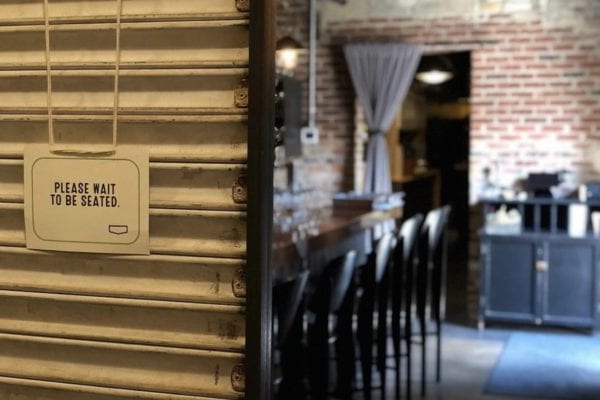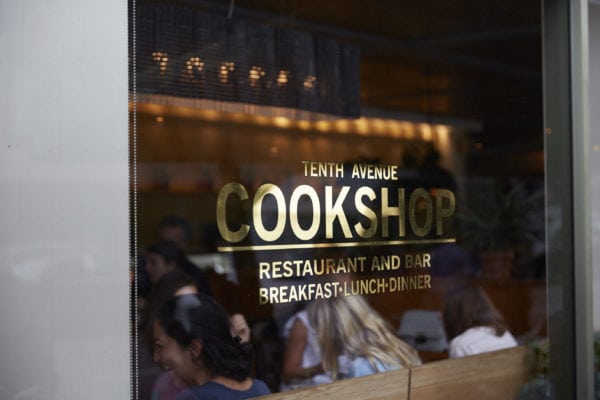Skift Take
Restaurant design in the Instagram age is so high-stakes, it's tapped into the power of Hollywood set designers. Wow.
— Kristen Hawley
Kris Moran had five months to source props for Wes Anderson’s 2001 film The Royal Tenenbaums, including three to prep. “When you’re on set, filming, it runs around $200,000 per day. You have to be prepared or everything stops,” says the set designer.
And for the interiors of the Bombay Bread Bar restaurant? One week.
The Bombay Bread Bar is the new incarnation of Indian restaurant Paowalla in New York’s SoHo and is the most recent example of a thoroughly modern restaurant tailor-made for the Instagram generation. When merely turning up the lights won’t do, restaurateurs are enlisting experts from stage and screen to make dining spaces that double as photogenic lifestyle moments.
Fashion haunts such as Ralph Lauren’s Polo Bar, which has locations in New York, Chicago, and Paris and was co-designed by Lauren, have known this for years, but the trend has gone Hollywood. At the Bombay Bread Bar, what was once a buttoned-up, monochromatic space is now a vibrant, colorful room, with a giant tiger mural animating the bread oven and a curtain of yellow flowers at the door.
The Wes Anderson Restaurant
“I wanted Paowalla to be fun and energetic, and I wasn’t succeeding,” says chef Floyd Cardoz. More important, he was doing only half the business he wanted to. Cardoz considered closing, but his friend Will Guidara, co-owner of Eleven Madison Park, encouraged him to hire Moran, whose work included The Darjeerling Limited, which featured a highly stylized view of India.
Paowalla’s transformation to the Bombay Bread Bar would be notable under most circumstances, but that it happened in a week—the amount of time it takes most restaurateurs to settle on a paint color—is astonishing.
It’s also extremely cost-effective. Moran hung the homemade, lotus-printed paper on the walls herself, added blue walls (“straight from the Wes Anderson color palate”), and put bright oil cloths on tables. A two-day painting project was done overnight. Costs clocked in around $70,000; a typical New York restaurant build-out can easily hit, and surpass, $1 million.
“Most traditional designers look at things from an architect’s point of view, big-picture design points that get expensive,” says Cardoz. “I said to Kris: ‘We need to make this fun.’ One week later, she’d done it.”
“On film sets, you can’t say ‘No.’ You make a good plan,” says Moran. She compares co-owner Cardoz to a director. “In film, we approach things from a story point of view. It’s different than a restaurant designer who focuses on trends—or a new fabric.”
The results (and Instagram likes) speak volumes: The Bombay Bread Bar has been packed since it opened in early March, with an energetic crowd putting back tamarind margaritas, chickpea battered onion rings, and saag paneer pizza on corn roti.
L.A. Prop Paradise
Out west, star chef Curtis Stone liked the props that stylist Kate Martindale chose for his What’s for Dinner? cookbook (Ballantine Books, 2013) so much that he tapped her to work on his house and then on the re-conceptualization of his elegant, 24-seat restaurant Maude in January. It’s now an intimate salon, replete with vintage fabrics and art deco furniture, where guests currently dine on the food and wine of Spain’s Rioja region, with such dishes as a large, wood-grilled chuleton (rib-eye) and Spanish tortilla.
“One of my biggest clients is Lauren Conrad,” says Martindale, who styled the celebrity’s best-selling Celebrate (Dey Street Books, 2016), as well as Kate Hudson’s Pretty Fun (Dey Street Books, 2017). “Believe me, I understand the importance of spaces that telegraph a lifestyle.”
For Maude, the two-week renovation meant installing velvet, dark-navy leather décor, and antiques that range from old ironstone plates to flea-market artwork in vintage frames.
“We did not have the budget for fine art,” says Martindale, revealing only that it was the high five figures. So instead, every time Curtis changes the menu, she’ll swap the photographs. “Restaurant designers go over budget all the time. They say: ‘I need that chair.’ Stylists are used to working with tiny budgets,” she says. “We MacGyver a lot.”
Atelier-Turned Dining Room
Roman and Williams principals Robin Standefer and Stephen Alesch designed the sets for such films as Practical Magic and Zoolander. Yet they’ve become renowned for their restaurants, including Le Coucou, which re-introduced New York to fine dining, with grand chandeliers, enough candles to light up a medieval palace, and a kitchen awash in copper.
“It’s the lighting,” maître d’ Michael Cecchi-Azzolina said in a 2017 interview about what makes the restaurant so special. “Roman and Williams made the place feel like a stage by lighting every table, so diners feel like they’re the center of the room.”
Now the designers have flipped the script: At their new La Mercerie, inside the Roman and Williams Guild, all the products are for sale, from plates and glasses to flowers, so fans can turn their homes into high-style dining rooms.
The Hamilton Effect
When the Times Square institution Bond 45 reopened in fall 2017, it did so with the help of David Korins, the Tony-nominated scene designer for Hamilton and War Paint, as well as Dear Evan Hanson.
For the upstairs room, Korins recreated the feel of the former restaurant, with tiled floors and mirrored walls, as well as a marble island adorned with antipasti platters. In the subterranean downstairs space, he managed to create the vibe of an Italian patio, with video installations of the Mediterranean and an abstract star field of light bulbs overhead.
“The design process is similar to Broadway,” says Korins. (Donald Holder, the Tony Award-winning lighting designer for The Lion King and South Pacific, also had a hand in the project.) “You work with your collaborator, whether its the director or the restaurant owner. You do sketches, you figure out how people will move through the space, then you install.
“Basically, a restaurant is a theater preview that’s 360 degrees and includes food. Each night, you see hundreds of scripts acted out in a dining room.”
David Rockwell, a trailblazer in the hybrid world of restaurants and theater design, concurs, but with a caveat. His Rockwell Group has designed dozens of restaurants, including the new Union Square Café and Nobu downtown; he has also won a Tony Award for the set design of She Loves Me, and his newest project is Broadway’s upcoming Lobby Hero.
“Both [restaurants and Broadway] are centered on scenography and storytelling,” says Rockwell. “But while they do share a lot of things, they use very different tool kits, from material selection to technology.
“I think the power of theater is the fact that it is temporary, experienced in the moment, and a particular performance cannot be repeated. A restaurant interior—that’s much more permanent.”
©2018 Bloomberg L.P.
This article was written by Kate Krader from Bloomberg and was legally licensed through the NewsCred publisher network. Please direct all licensing questions to [email protected].
![]()



